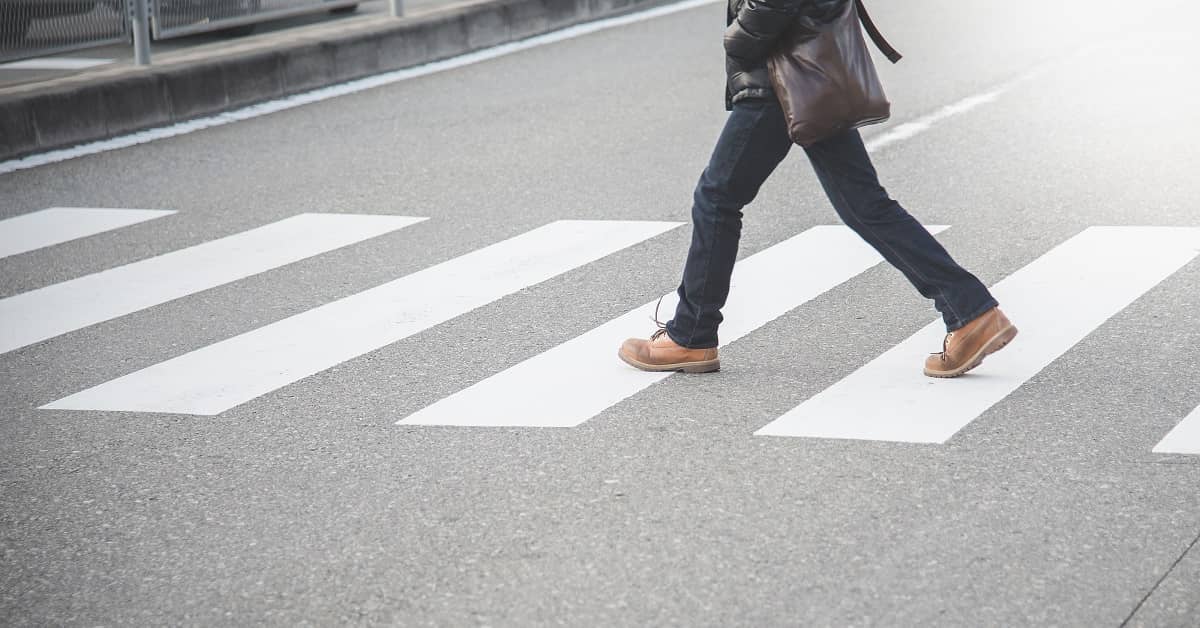
It can be easy to take for granted that most drivers on the road pay attention, obey traffic laws, and avoid drinking and driving. However, there are plenty of drivers on the road who do engage in reckless behavior, and they are a danger to other drivers and pedestrians alike.
In 2019 alone, 6,205 pedestrians lost their lives in accidents across the country, and hundreds are injured throughout Nebraska every year. Each of these accidents is a tragedy that, in many cases, could have been avoided.
There are steps you can take to avoid accidents while walking, running, rollerblading, skateboarding, or bicycling near traffic. Similar to defensive driving, the goal with “defensive walking” is to never assume others are paying attention or fall into a false sense of security.
If you have been injured while on foot and need legal support to pursue compensation against the negligent driver, contact a pedestrian accident lawyer at Hauptman, O’Brien, Wolf & Lathrop for a free consultation.
1. Look Both Ways
The simplest pedestrian rule, looking both ways, can also be the easiest to forget. As with driving, sometimes we look one way, notice there is no oncoming traffic, and then look the other way, which does have oncoming traffic. Once the traffic passes from that direction, you may start to cross, forgetting to check the other direction again before doing so.
But vehicles can approach faster than you might expect, especially when drivers are speeding. You may also be in a hurry, but “better safe than sorry” is always the right mindset when crossing the road.
2. Cross at Marked Crosswalks Only
The importance of not jaywalking is twofold:
- First, your safety: Drivers tend to anticipate pedestrians more at crosswalks. Their attention is increased, meaning they are less likely to hit a pedestrian at a crosswalk. While this can be inconvenient and people rarely get into legal trouble for jaywalking, it is still best to avoid it if you want to stay safe.
- Second, your claim: If you jaywalk and a vehicle hits you, it doesn’t necessarily mean that you won’t be able to recover compensation for the accident. That said, even if the driver was also at fault, it could lessen your total compensation due to the rule of comparative negligence.
- If, for example, the other driver was texting or speeding, but you were also jaywalking, your total compensation may be reduced by the percentage you were deemed to be at fault.
It is also important to obey signs and signals at crosswalks. Walking against the signal puts you at greater risk of a pedestrian accident.
3. Enhance Your Visibility
Crossing the street at nighttime is understandably more dangerous than in the daylight. Visibility is much lower, meaning it is more difficult for drivers to see pedestrians.
This is why, if you are walking or running at night or even in overcast weather, we recommend you wear reflective gear, such as a reflective sash, ankle bands, or a vest. If you want to improve your visibility further, consider purchasing convenient, affordable safety lights to wear or affix to your bike.
4. Be Mindful of Lighting and Weather Conditions
Walking, running, or biking along well-lit streets at nighttime is the safest route. However, if you are traveling down unlit or poorly lit streets, keep in mind that it can be difficult for drivers to see you. Even if vehicles have their lights on and you are wearing reflective gear, an accident can still occur if drivers fail to pay attention.
Keep this in mind and consider moving out of the street or not crossing until the driver passes, just to be safe.
Also, be mindful of the weather. Rain hinders visibility, and snow and ice can make it more difficult for drivers to respond to pedestrians. Even if a driver appears to be slowing down for you at a crosswalk, if conditions are slippery, it’s best to wait until the driver has come to a complete stop before walking in front of the vehicle.
5. Check the Driver’s Behavior
The principle behind defensive walking, as with defensive driving, is that you should never assume that a driver on the road is acting responsibly or paying attention. You should do your best to put your well-being and safety into your own hands, never presuming that someone else is going to do the right thing.
When you are walking in the vicinity of traffic – whether you are crossing the street or walking on the shoulder of the road – pay attention to drivers’ behavior. If a driver seems to be swerving or driving erratically in any way, get as far away from the road as you can to avoid an accident.
Contact a Pedestrian Accident Lawyer If You Are Injured on Foot
In the worst-case scenario, when a pedestrian is hit by a vehicle, it is imperative for the pedestrian to receive both medical attention and legal guidance as quickly as possible. Not only does this help ensure your well-being, but it also enables your attorney to begin building a case as quickly as possible to help you recover compensation.
Make no mistake: Insurance companies will do everything they can to fight your claim, and it is unlikely they will offer you a fair settlement. You need to even the playing feel with experienced attorneys who know how to recover fair compensation for their clients.
If you have been injured in a pedestrian accident, please call Hauptman, O’Brien, Wolf & Lathrop at (402) 241-5020 today for a free case review. Our pedestrian accident lawyers serve clients in Omaha, Sarpy County, and other areas of Nebraska and Iowa.



David and his team were so incredibly helpful! They made a difficult time in my life so much easier. I’m super grateful to them all!